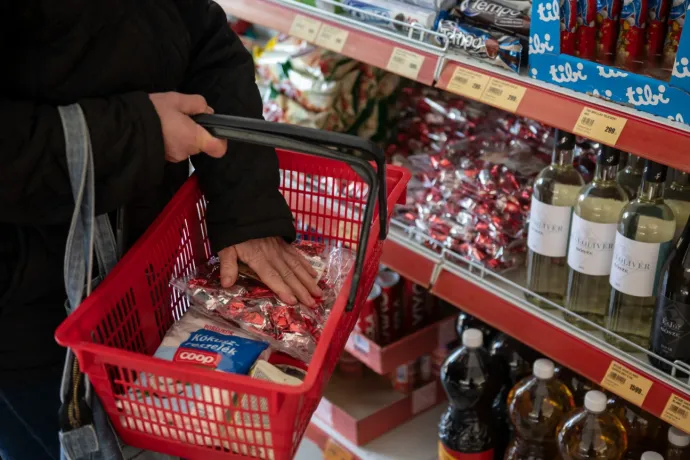
Eurostat, the statistical office of the European Union, has published the inflation figures for December 2022. We already knew that inflation in Hungary had increased further from November's 23.1 percent to 25 percent, which is more than two and a half times the EU average.
But what about food prices?
Unfortunately, there's no good news: the price of food has continued to rise in Hungary in December as well, and it remained just below 50 percent at 49.6 per cent. It is no wonder that the Hungarian Competition Authority (GVH) is investigating whether retailers have driven food prices sky high.
This figure doesn't look good on a graph comparing EU countries either:
As can be seen, things are not exactly dandy in other EU Member States either, and although the EU average did not jump 2.4 percentage points like the Hungarian average, it did go up from 17.9 to 18.2. The best performers are Luxembourg (11.1), Ireland (12.1) and Cyprus (12.2 per cent), while Hungary has the worst figures. And although Lithuania (33.5%), Estonia (30.8%) and Latvia (29.4%) are next in line after Hungary, even they are following well behind.
What does the future hold?
Unfortunately, nobody knows. In December, the Hungarian National Bank (MNB) predicted that inflation in 2023 would be higher than in 2022. However, given that instructions have been given (by the PM LINK) to bring the numbers down to a single-digit inflation by the end of the year, the beginning of the year could see a dismal rise: that's the only way the central bank's math works out.
MNB is forecasting food inflation of 29.7 percent this year, after nearly 29 percent last year. However, this is largely due to the carry-over effect of the 2022 increase, which means that food will not cost nearly 30 percent more than it currently does, but the annual average will be only that much more than this year’s.
For more quick, accurate, and impartial news from and about Hungary, subscribe to the Telex English newsletter!